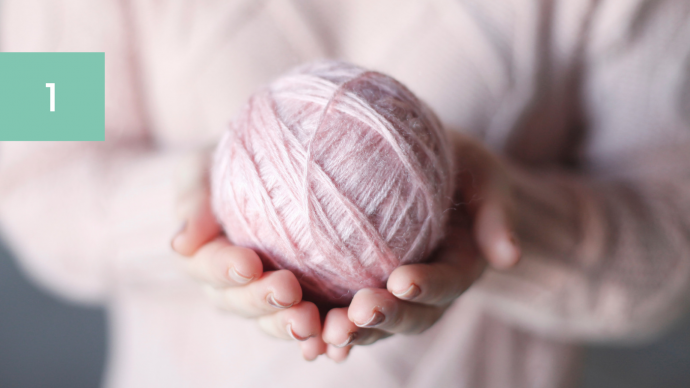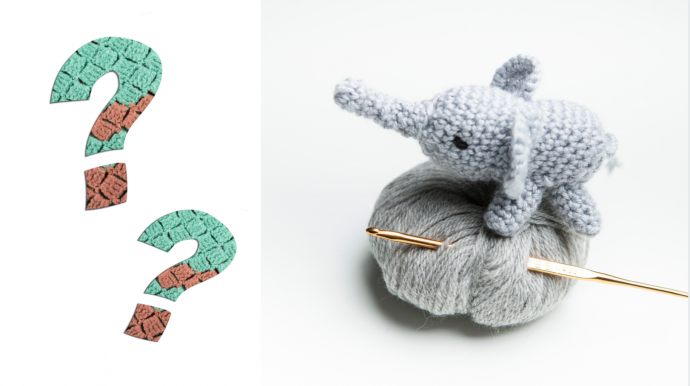Hello, my dear crocheters! I keep answering some of the most common questions you have and to anticipate some questions you didn’t know you had. Today I invite you to learn what is a stitch multiple, where do the extra stitches come from and to fix them, how to deal with missing stitches, what is a pattern repeat, how to finish off a crochet project correctly, how to keep yarn from tangling, and some general suggestions on how to learn a new stitch. I hope that this information will lead you down the road to gaining the confidence needed for good crocheting.
My goal in creating this section was to help as many beginners as possible because I know how frustrating it is when your crochet project just isn’t going right. So feel free to leave your questions below! Be sure to make them as detailed as possible, and I will try to help you as best as I can.
What is a multiple?

A multiple, also called a stitch multiple, is the number of stitches required to work a complete stitch pattern widthwise. This set of stitches may be repeated across the width of the piece to create a pattern. For example: A stitch pattern that uses a “multiple of 6 stitches” may be done over any multiple of 6 (including 6, 12, 18, and so on).
Some stitch patterns require a number of stitches in addition to the multiple in order to have (a) required selvedge stitch(es) or (b) to center the stitch pattern on the fabric. If a stitch pattern calls for a “multiple of 6 plus 2,” it means that the stitch pattern can be worked over any multiple of 6 (6, 12, 18, 24, . . .), plus 2 stitches (8, 14, 20, and so on). Note that a multiple of 6 plus 2 is not the same thing as a multiple of 8, although the first multiple of 6 plus 2 is 8.
Extra stitches — where did they come from?

Keeping your stitch count in balance is an important part of following a pattern. Not every case of accidental increasing will require ripping out, however. With extra stitches, I find that they’re best addressed on a case-by-case basis.
Most errors occur at the beginning and end of a row. Check the directions. For single crochet, work the first stitch in the row in the first stitch of the row below. Work the last stitch in the last stitch of the single crochet in the row below. For double crochet, work the first stitch in the second stitch of the row below. Work the last stitch in the turn chain. At the end of each row count stitches to be sure it is the number required.
Missing some stitches — where did they go?

If your crocheting keeps getting narrower, it means you are not crocheting into every stitch in a row. Remember, for single crochet, work the first stitch in the row in the first stitch of the row below. Work the last stitch in the last stitch of the single crochet in the row below. For double crochet, work the first stitch in the second stitch of the row below. Work the last stitch in the turn chain. Count stitches frequently. It is also easy to miss a stitch within a row, especially when using a textured yarn where it is harder to see the actual stitch.
What is a pattern repeat?

A pattern repeat can refer to the stitches needed to complete a stitch pattern horizontally and/or the number of rows needed to complete the stitch pattern vertically. A stitch pattern that is made by working the same eight rows over and over is said to have an eight-row pattern repeat.
What is the best way to learn a new stitch pattern or technique?

Practice, practice, practice! Use a light-colored, smooth, worsted-weight yarn and an appropriate-size hook — probably an H/8 (5 mm) or I/9 (5.5 mm). In the beginning, don’t worry about your gauge or about making stitches look even. Work a little swatch until you are comfortable with the stitch pattern and your edges are even. Once you are confident with the stitch pattern or technique, you can start over to work a gauge swatch or to begin your project.
If you don’t understand something the first time, try approaching it through one of your other senses. Everyone has a different style of learning that works best for that person. For instance, I’m a kinesthetic learner. Reading about techniques doesn’t help me unless I have yarn and hook in hand so that I can do as I read. You may need to look at the pictures, because you are a visual learner. Or perhaps reading the instructions aloud helps because you learn best by hearing the words. It may help to have someone else read the instructions and explain them to you using different words. Whatever your learning style, do what it takes to understand a technique that is new to you.
How do I finish off a project correctly?

This is also known as tying off, or binding off if you’re a former knitter. To do this:
After you’re finished with your last stitch of your last row, lay your project down with the loop still around your hook
Grab a pair of scissors and cut your yarn about 4-6 inches away from your hook
Use that yarn to yarn over your hook, grab that yarn, and pull it all the way through. Pull tight to secure the knot
Now use your tapestry needle to weave in your ends! – To make sure it’s extra secure, I like to weave in my ends in at least 3 different directions.
How to keep yarn from tangling? I have started my first afghan. I am carrying the four colors of yarn up the sides. My problem is that with every row of turns my yarns are getting more tangled. Is there a special way of turning to keep them from tangling, or do I have to untangle each skein about every 10 rows?

Yes, you would have to rearrange the skeins after you turn on each row. It may be more involved than just rotating the basket depending on how you are using the colors in the row. Working with multiple skeins of yarn at once can become very messy and frustrating, and all too often our yarn gets tangled up, both with itself and with other colors. Sometimes even simple crochet patterns can take a while to work up – not because the pattern is long or even difficult to read, but because your many skeins of yarn are tangled. To keep yarn from tangling as you work with two skeins, place one skein on each side of you. The first time you turn your hook, turn it counterclockwise. Next time, turn it clockwise. Repeat.









is it necessary to undo a skein and form a ball? Just spent 3 days untangling a skein.